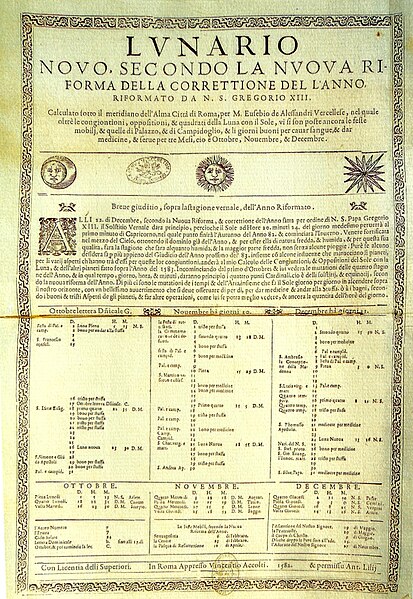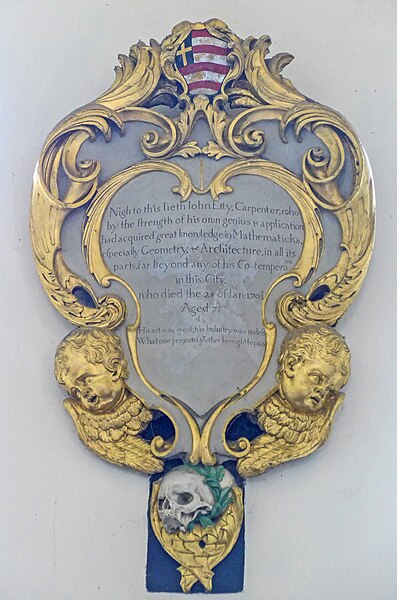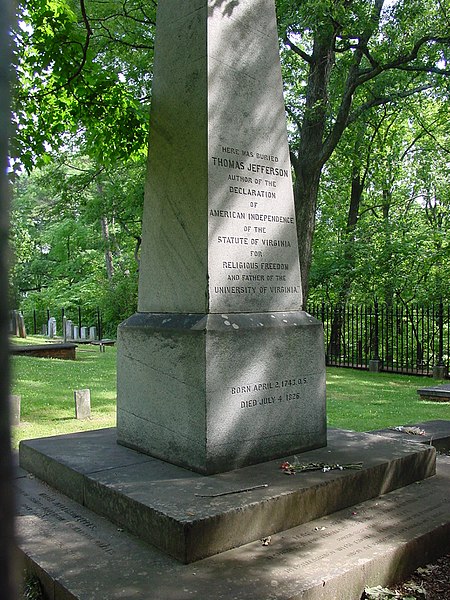Dual dating is the practice, in historical materials, of indicating a date with what appear to be duplicate or excessive digits: these may be separated by a hyphen or a slash, or placed one above the other. The need for dual dating arose from the transition from an older calendar to a newer one. Another method used is to give the date of an event according to one calendar, followed in parentheses by the date of the same event in the other calendar, appending an indicator to each to specify which reference calendar applies.
On this marriage certificate, made out in 1907 in Warsaw (then part of the Russian Empire), the month is given as "November/December", and the day as "23/6". The Julian date 23 November corresponded to the Gregorian 6 December.
Memorial plaque to John Etty in All Saints' Church, North Street, York, recording his date of death as 28 January 170+8/9 (Julian calendar, different start of year)
Thomas Jefferson's tombstone. Written below the epitaph is "BORN APRIL 2 1743 O.S. DIED JULY 4 1826"
Adoption of the Gregorian calendar
The adoption of the Gregorian Calendar was an event in the early modern history of most cultures and societies, marking a change from their traditional dating system to the modern dating system – the Gregorian calendar – that is widely used around the world today. Some states adopted the new calendar from 1582, some did not do so before the early twentieth century, and others did so at various dates between. A few still have not, but except for these, the Gregorian calendar is now the world's civil calendar universally, although in many places an old style calendar remains used in religious or traditional contexts. During – and for some time after – the change between systems, it has been common to use the terms "Old Style" and "New Style" when giving dates, to indicate which calendar was used to reckon them.

Lunario Novo, Secondo la Nuova Riforma della Correttione del l'Anno Riformato da N.S. Gregorio XIII, printed in Rome by Vincenzo Accolti in 1582, one of the first printed editions of the new calendar.
Swedish Almanach of 1753
William Hogarth painting: Humours of an Election (c. 1755), which is the main source for the "Give us our Eleven Days" mythical riots.
Partial Russian text of the decree adopting the Gregorian calendar in Russia as published in Pravda on 25 January 1918 (Julian) or 7 February 1918 (Gregorian). It instructed citizens to count the day after January 31 as 14th February.







